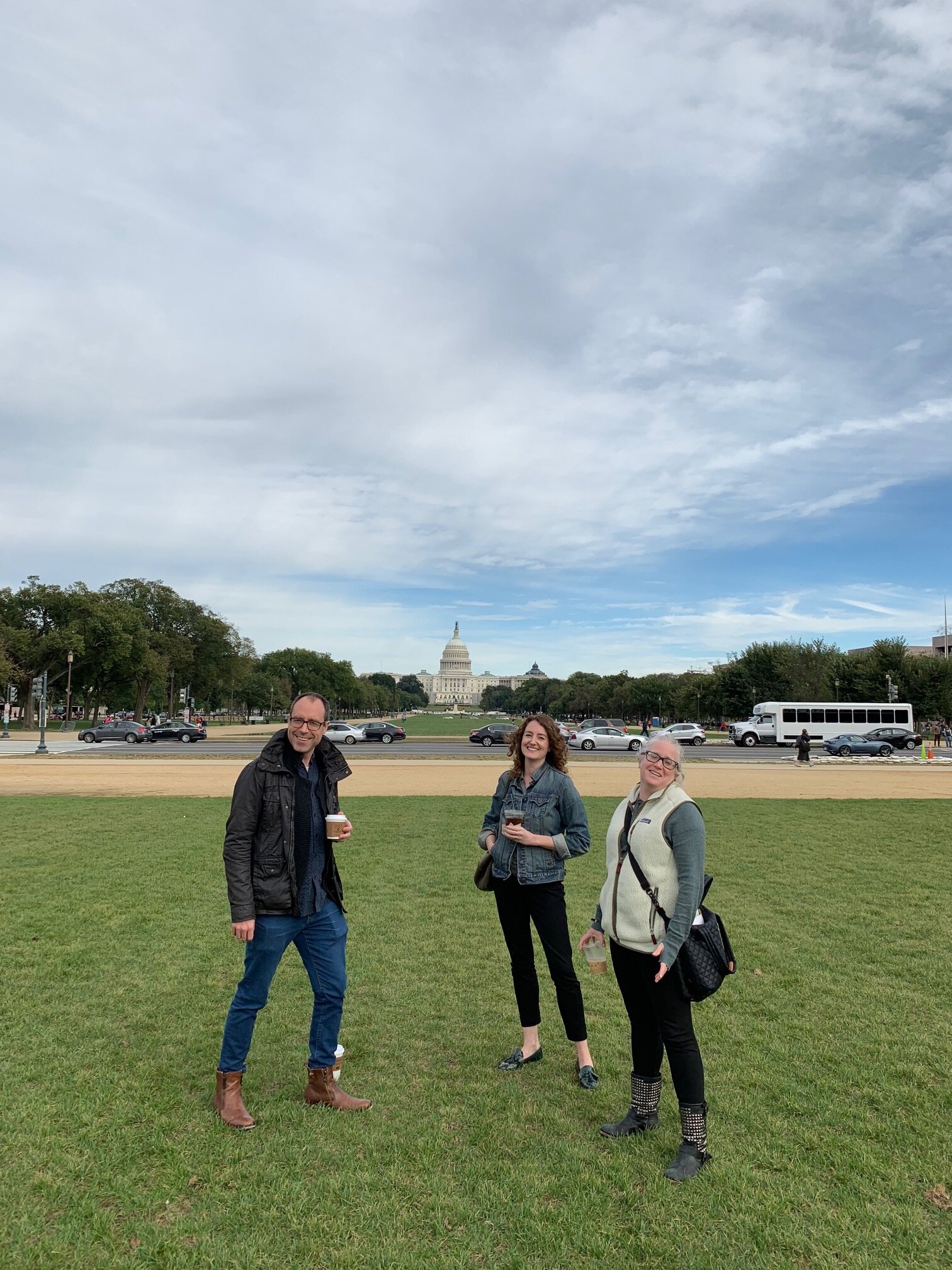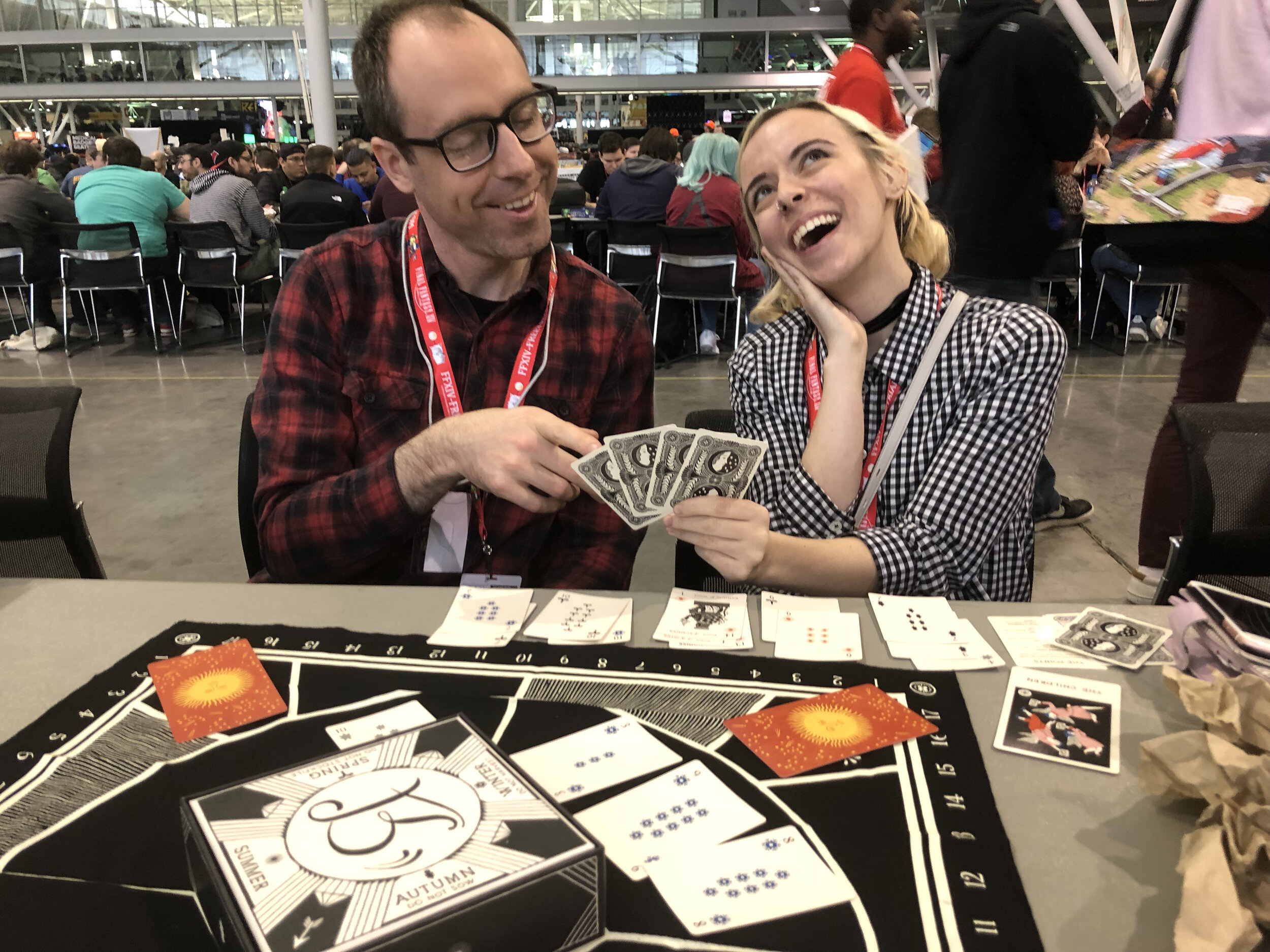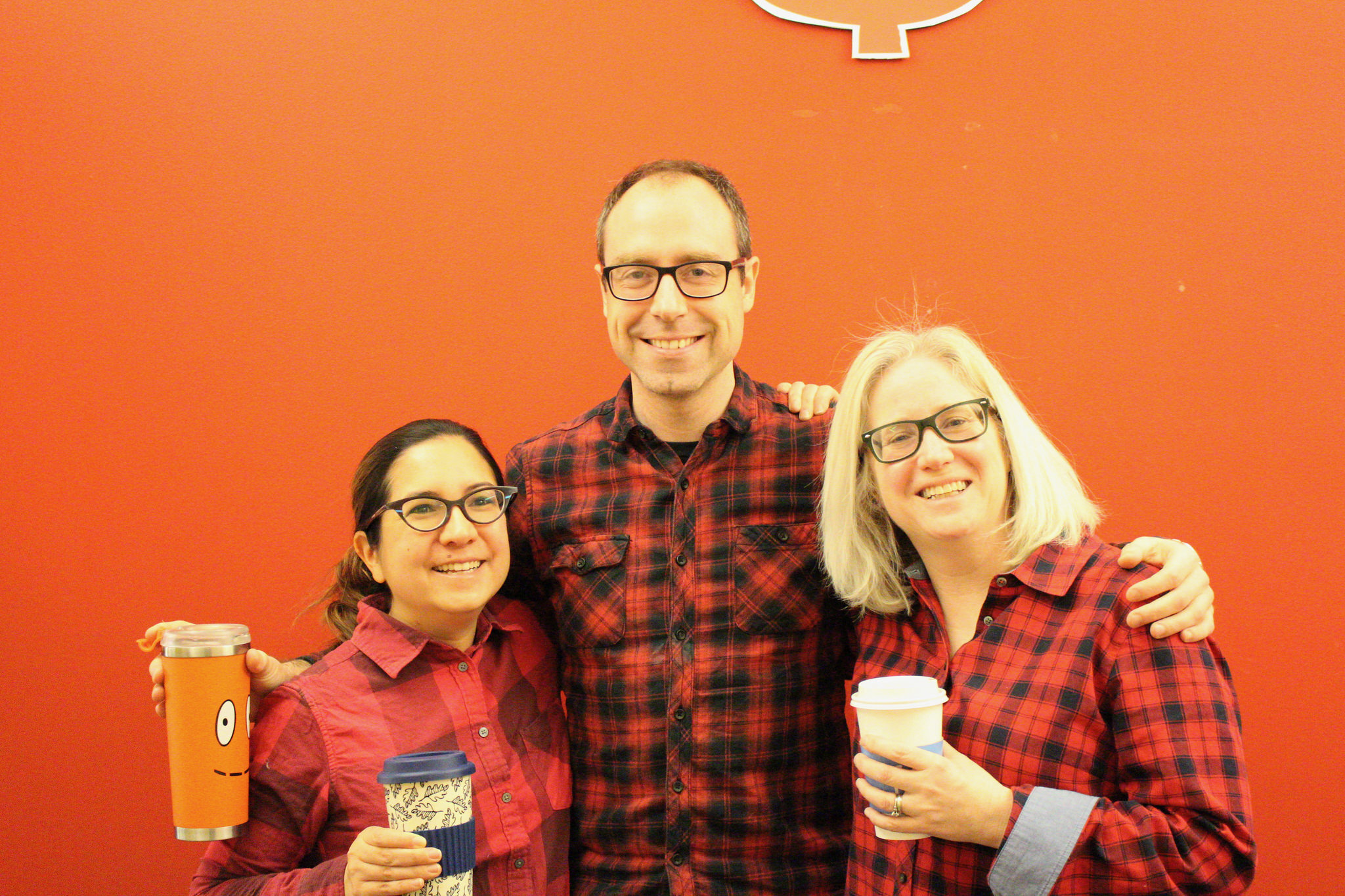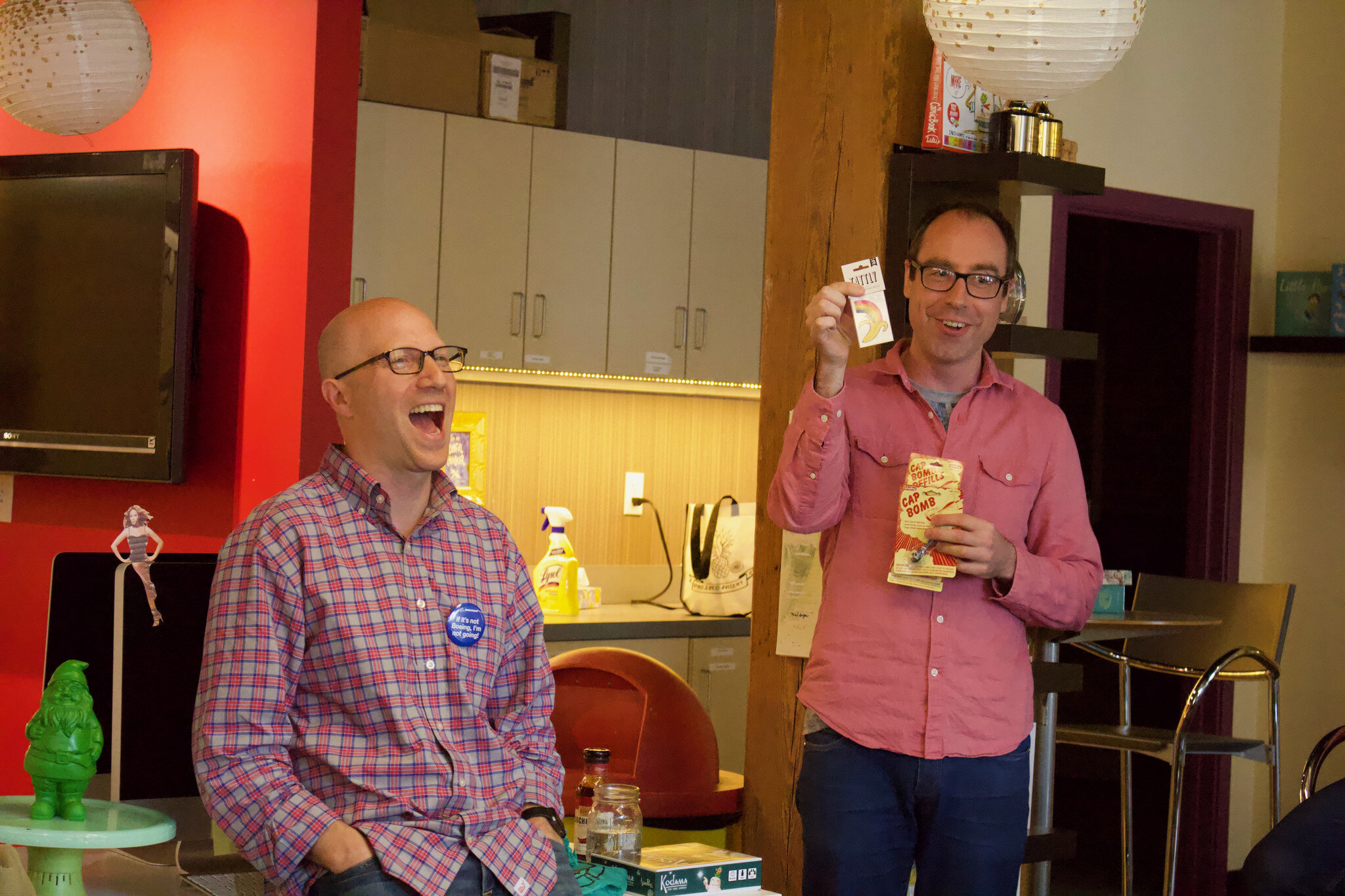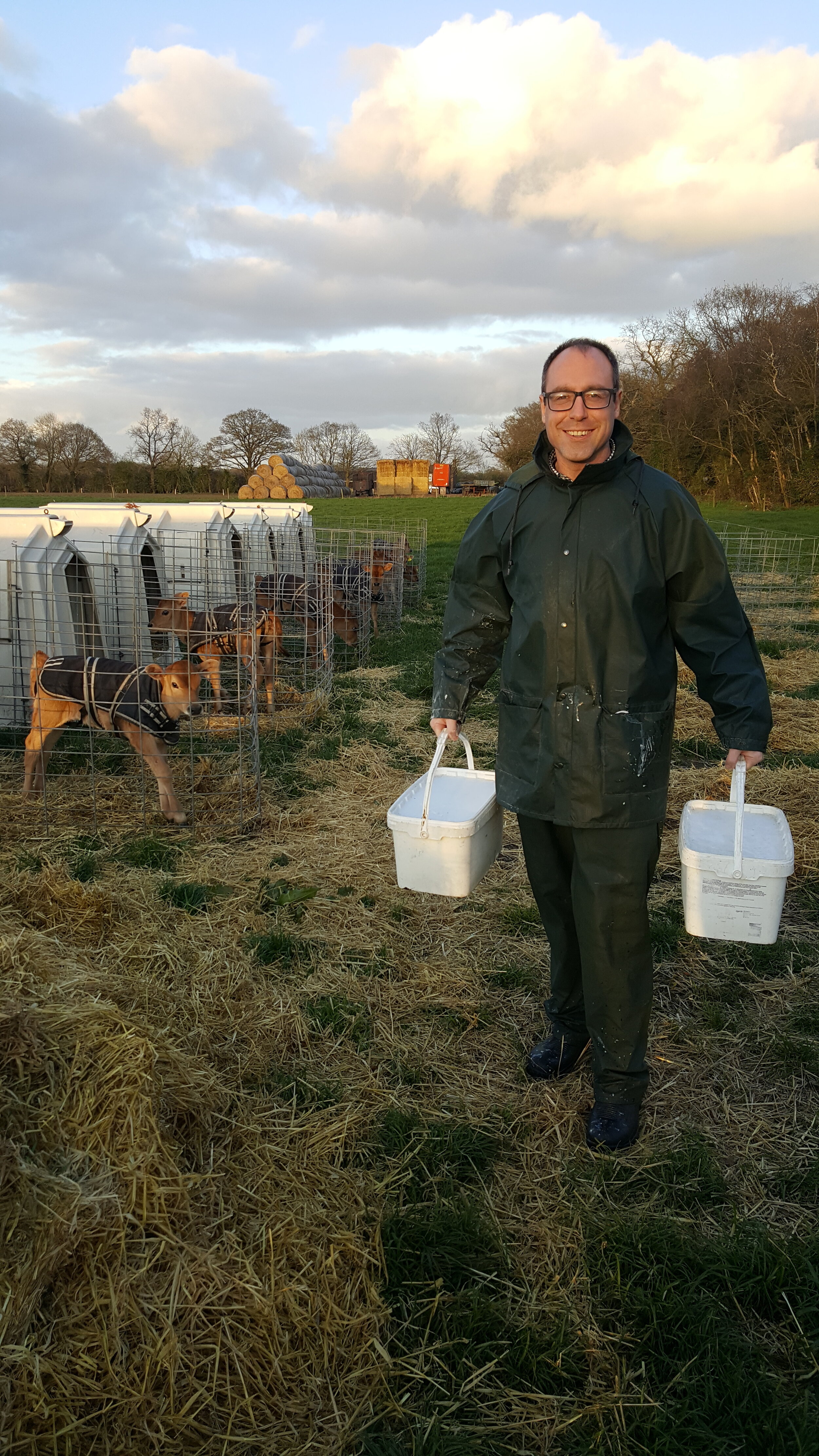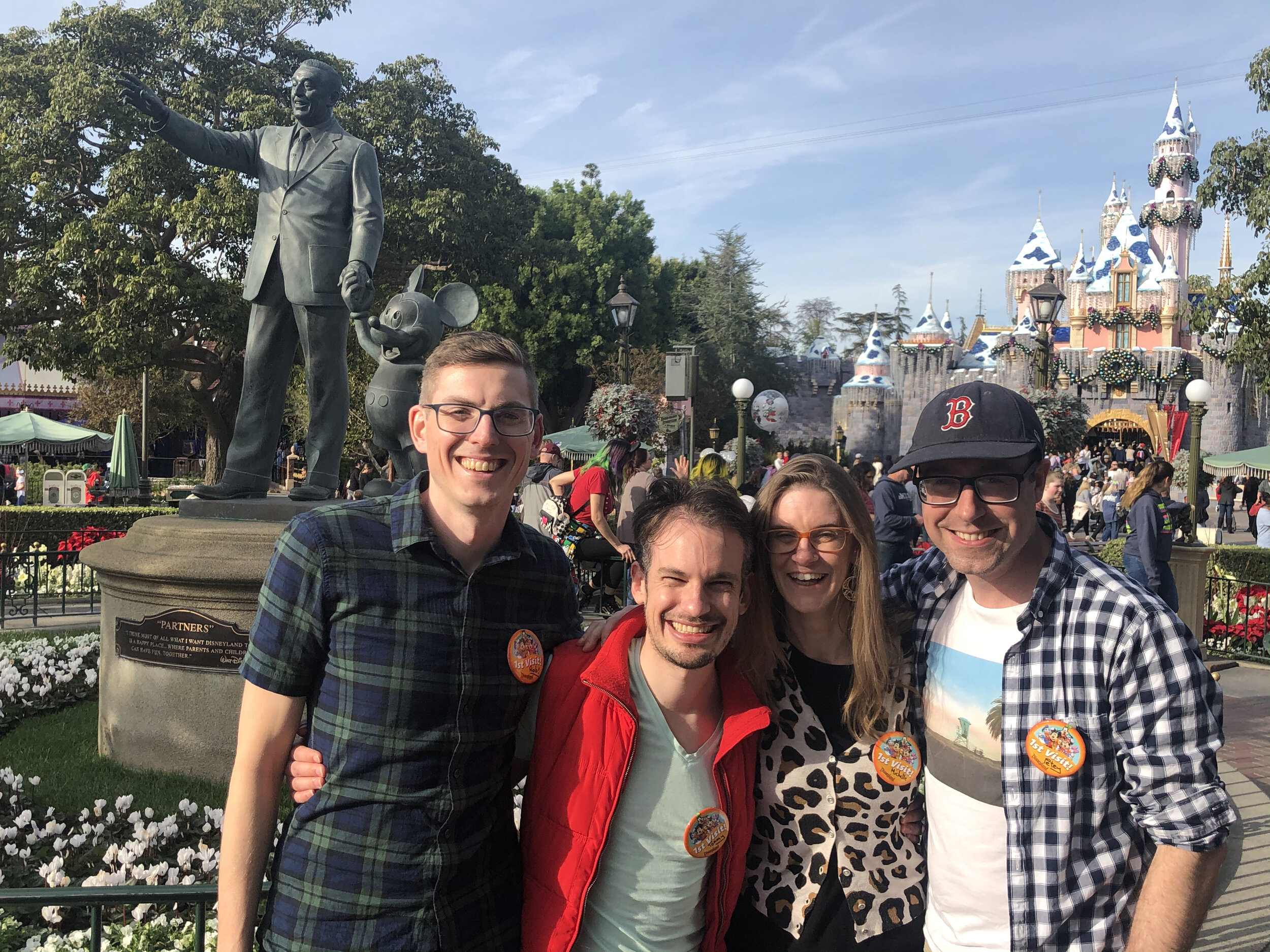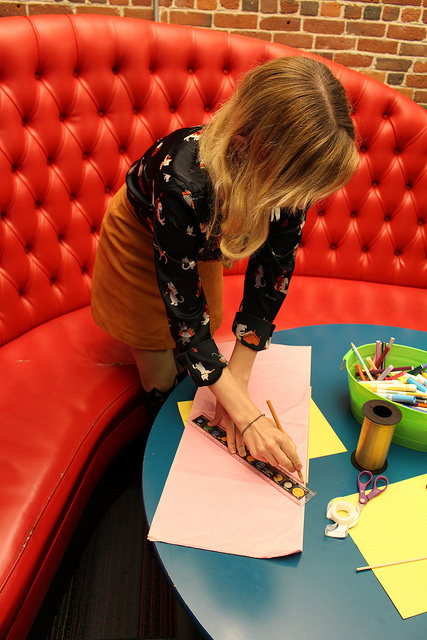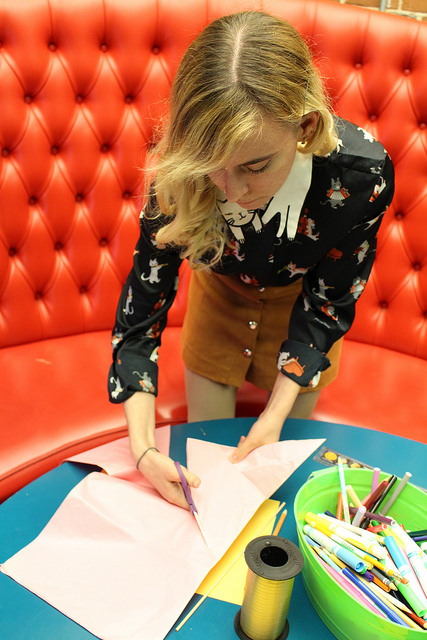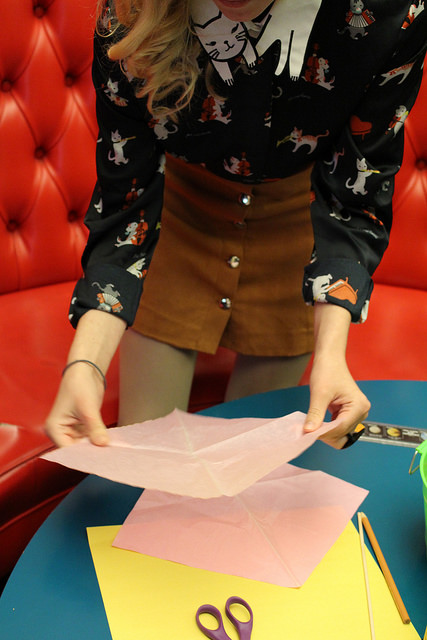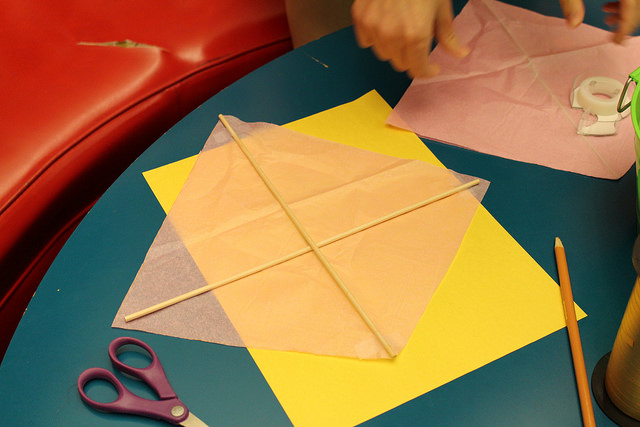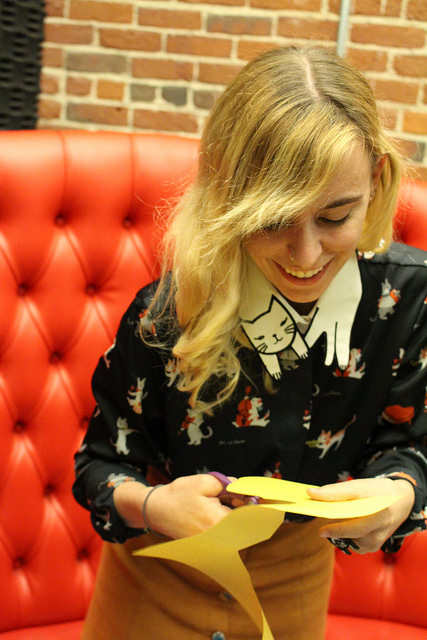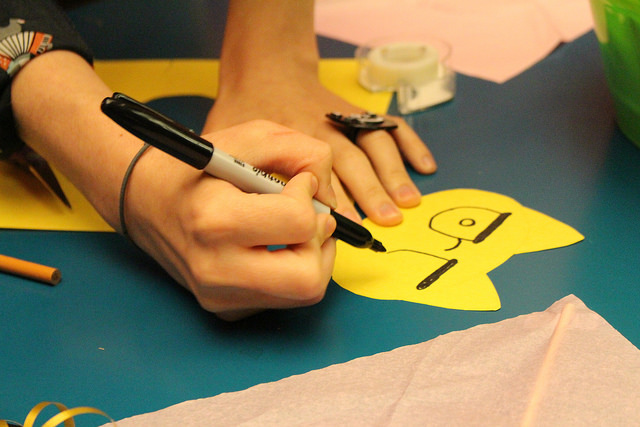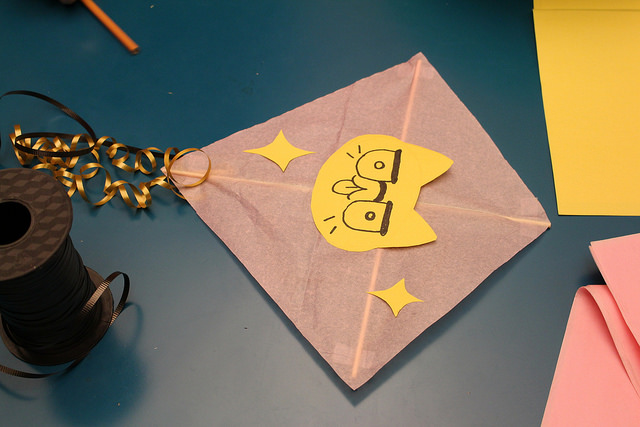“When there’s a lot going on, it’s a bit like conducting an orchestra,” shares Peter Stidwill, FableVision Studios’ executive producer. A working studio has many moving parts—departments, research cycles, partners—and Peter works with all of them to ensure harmonious production.
Peter originally connected with FableVision during his time at Learning Games Network (LGN), a longtime FableVision partner, with whom the studio collaborated on the award-winning Quandary. His background includes jobs at the BBC and the UK Houses of Parliament, where he worked on game-based learning and digital educational tools.
In his role, Peter manages multiple animation, games, museum interactives, and other media, as well as oversees staffing to ensure that teams are set up to meet the varied needs of all projects and clients. From finding potential new partners to creating initial timelines to reviewing user feedback, Peter guides projects from inception to completion. “As a producer, I absolutely love being the ‘vision holder’ of a project,” shares Peter. This “vision” allows him to oversee every aspect of a project as the ultimate production maestro. You can catch him representing the studio at various panels at industry conferences—including an upcoming one in June! Read on for more details.
What does a day in your life as executive producer look like, and how has your daily task list changed since first joining FableVision?
Although my transition to executive producer meant taking a step back from some of the detailed day-to-day production tasks, it allowed me to play a bigger role in finding and meeting clients and partners—brilliant people doing engaging and impactful work—and collaborating with them to shape the overall approach of new projects. A typical day for me includes talking to potential clients to scope out new partnership opportunities, mentoring and supporting our talented team of producers, working with FableVision’s skilled art, technical, and creative directors to plan resources, and meeting with individual production teams to kick-off new projects and review deliverables. And snacks. Lots of snacks. (Is it snack time yet?)
What sets FableVision apart from other studios?
It’s all about the amazing diversity of people and projects. My FableVision colleagues bring enthusiasm, joy, and thoughtfulness to all our projects. And our clients and partners allow us to create some of the most worthwhile and important products, campaigns, and media that I could hope to work on, whether that’s bringing age-appropriate playful assessment to kids across the State of Georgia, or helping children and parents destigmatize conversations around mental health through an animation and graphic novel right here in Massachusetts.
What is challenging in your role? What is rewarding?
Each of our projects is unique at FableVision, and that’s what keeps them both challenging and rewarding! We have strong, solid processes for all the different types of media we create. At the same time, we constantly refine and customize our tools, approaches, and skills in order to meet specific goals, leverage new technology, and react to user feedback. It’s truly inspiring to see our production teams create so much fun content every day across such a broad range of projects, whether it’s a digital prototype to test a game mechanic, a cute raccoon character for an animation, or music for our latest app.
You’ve worked on large projects like Zoombinis and Quandary! How do you approach projects of that scale, and what’s your favorite part about working on those kinds of projects?
The idea for a Zoombinis relaunch began while I was still working at Learning Games Network prior to joining FableVision, so I was excited to be a part of the team making the game a reality after coming to FableVision. One of my earliest roles was to write the game design document, which required me to have a strong understanding of the original game in order to reverse engineer the game logic. We also made alterations to the logic according to feedback we received from fans of the original and the original game designers: Scot Osterweil and Chris Hancock. The project truly was a team effort between TERC, FableVision, and LGN, and that strong partnership—as well as always honoring the original vision of the game while also modernizing it to maximize its impact of end-users, both those who have been fans for years and first-time players—was truly what made it a success.
Quandary was my first project at LGN, and being able to see the process from both the client and developer sides was very interesting for me. With a game like Quandary, which teaches ethics and perspective-taking through story and a card-sorting mechanism, it’s important to keep the game goal top of mind, along with considering scale, timeline, and other budget needs. In approaching a game like Quandary, the learning objectives and the impact of the game on the user are important to consider throughout the game design process. We’ve received incredibly positive feedback from educators and students, as well as the educational gaming industry through conference awards and talks, which really show the impact that a game can have on teaching social-emotional skills, such as problem-solving and comprehension.
In my role as executive producer, one of the most fun parts of a large-scale project is to map out the overall approach, beginning with an empty slate and blank timeline, and sketching out the components of the project, as well as balancing everything out to meet the needs, timeline, and budget. It often involves a lot of number wrangling in spreadsheets and planning software, but I find it to be a rewardingly creative and collaborative process in its own right.
You have a background in engineering, with a focus on “virtual learning applications.” How has your background influenced your work at FableVision?
I always knew I wanted to combine art and technology in a way that helped inform and entertain. I also knew that I loved creating—be that films, games, or elaborate models of theme park rides. So educational media and technology was a perfect fit. That’s what I specialized in during my engineering degree, where I focussed on researching, creating, testing, and iterating on technology approaches that made a real impact for teachers and students. I’ve always tried to build on that experience and approach throughout my career.
You came to FableVision from Learning Games Network, who we’ve had a strong partnership with for years. What was it like working with FableVision as a client? How was the transition into FableVision’s production process?
I absolutely LOVED working with FableVision as a client. FableVision genuinely took the time and effort to understand and build on the goals of the projects I worked with them on. I think that’s part of FableVision’s secret sauce: each team member that touches a project during its development is empowered, encouraged, and motivated to add creativity to the finished product. It was a natural transition from LGN to FableVision, as I knew the people and mission was aligned with my own.
You’re presenting in a Serious Play Conference panel in June on game-based assessments with MIT Education Arcade and Playful Journey Lab. How are game-based assessments gaining momentum in the edtech industry, and how has FableVision stayed at the forefront of this trend?
Game-based assessments are becoming more popular as an alternative to traditional testing that often takes the stress out of the assessment process. We’ve found that game-based assessments show a lot of promise in their ability to level within grade levels for students struggling with mastery of the standard. There are multiple entry points along the learning continuum to assess the standards in a game.
In designing game-based assessments, FableVision tries to approach them in a similar manner to our non-assessment projects, marrying content and game design. Good games—whether educational or not—inherently assess the player’s ability to perform in the game and provide appropriate leveling, feedback, rewards, and challenges in real-time. That’s what makes games such a great learning tool. And as they are digital, there is huge potential, but also potential pitfalls, with capturing that data and presenting it back to players and teachers. So when designing game-based assessments, we try to bring in our extensive knowledge of game design and user engagement, while adding on the additional assessment layer.
Formative assessment, in particular, we find is where the benefit of a gaming approach can really shine through and where teachers can get insights into how the kids are doing and provide targeted interventions to help them. We design the backends of our assessment games so they collect data throughout and present that information to educators. The data that we deliver to teachers is always at the forefront of our minds. We are fortunate to have worked and continue to work with incredible partners and clients, in both the commercial and academic worlds, to apply the best practices from researchers, the feedback and insights from educators, and the experiences of players in this field over diverse subject areas and for all ages across a large number of games.
You’re also an avid gamer—both playing and creating! What is your favorite game at the moment, and what overlaps do you see between the work you do at FableVision, the games you play for entertainment, and the projects you complete in your spare time?
I’m currently playing A Short Hike, a delightful and relaxing exploration game that builds a wonderful sense of place and adventure. Like many of the games I play and that FableVision makes, it fuses story, characters, and mechanics to create a fun, uplifting, and moving experience.
April showers bring May flowers! What’s your favorite rainy day activity, and how do you keep yourself entertained while stuck indoors?
Rainy days are always a great excuse to play both computer and board games. I’ve also recently got back into an old hobby of mine: video editing. While I love making non-linear experiences, I also find a lot of joy in the creativity of compiling linear stories.
More About Peter:
Next on your to-read list: Hag-Seed by Margaret Atwood.
Favorite hiking trail: Franconia Ridge Loop Trail, White Mountains, NH—conquered on my second attempt!
Best ride at your favorite theme park: Avatar: Flight of Passage, Disney’s Animal Kingdom.
Public figure you’d most like to meet (dead or alive!): Kylie Minogue.
Favorite word: Omnishambles.
Preferred way to have a cup of tea: PG Tips with milk! (Good old English builder’s tea).



